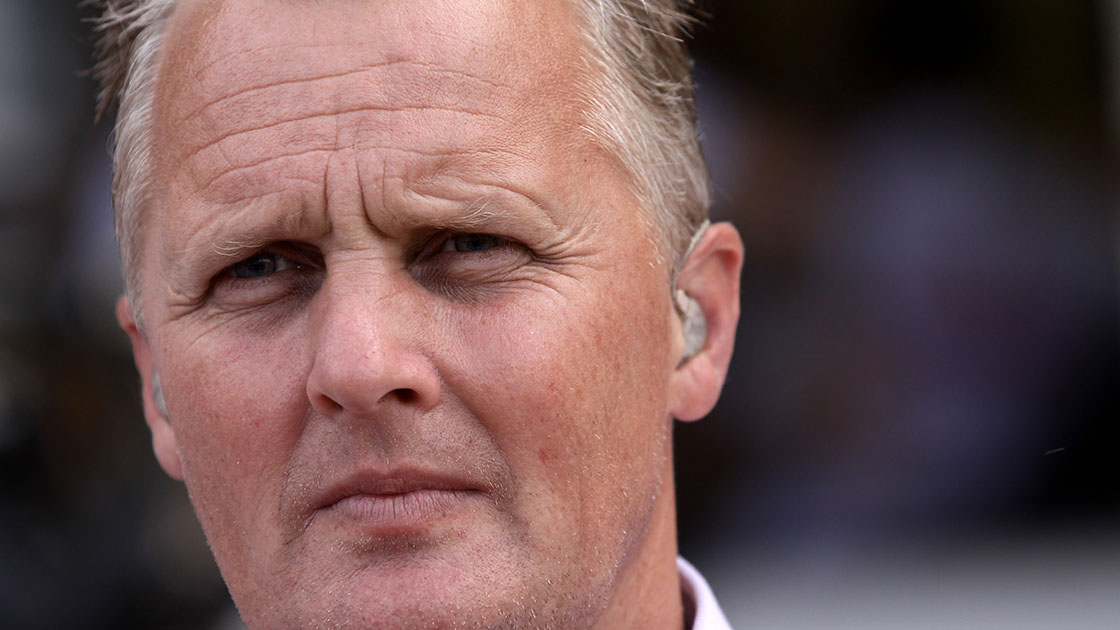'Is it right to penalise drivers for breaking track limits by millimetres? Actually, yes it is': Johnny Herbert
If you go off the circuit, there needs to be a consequence — as long as it's consistent

Grand Prix Photo
Track limits and the rule on crossing the white line reared its head again at the Austrian Grand Prix. In the race more than 40 transgressions were recorded and five-second penalties were dished out. On this one, drivers all moan how it’s hard to judge. Push the white line three feet wider and they’d still say the same. But at Monaco you judge where you place the car by your outside wheel, not if your inside has crossed the line, and at most of the tracks I raced on that was the case: there was the kerb, then it was grass and gravel.
I think it was good the drivers were pulled up for it in Austria, that it happened in the race, and it was good that people got penalised. There comes a point when you have to say enough is enough, and now we are going to really monitor this.
Sergio Pérez paid a heavy price for cutting Turn 8 in qualifying, losing his Q2 time and therefore also all his Q3 runs, dropping him from fourth to 13th on the grid. There was a logic to it, even if some said it shouldn’t have taken so long for him to be penalised. But hopefully it will make drivers think a bit more at such circuits. They knew Turns 9 and 10 would be policed, but they didn’t expect it at Turn 8. Actually the FIA should be looking at track limits everywhere. It’s a risk and it’s entirely up to you if you want to take it. But you know you might pay a heavy price.
In my day I remember you’d try things too, then Charlie Whiting would say you shouldn’t really be cutting the corner there – and then you didn’t! You knew maybe he’d penalise you. Today, if they put a sausage kerb in the drivers moan and say it will damage the car. But in that case just don’t go there. If you put a wall in, you wouldn’t go over the white line. I remember watching how the top drivers did it before I came into F1 in 1989, how they wrestled the cars between the white lines.
“Racing between the lines has always been what it’s about”
That was the skill: to stay out of the gravel trap and, earlier on, out of the catch fencing. I remember Blanchimont when I first went to Spa. There was a three-storey barrier right on the edge of the track. There was no get-out-of-jail card and it was a mental skill, which is much rarer today. Drivers still like a challenge, but if they can get away with something they’ll push it – as we always did too.
The drivers have to be more truthful to themselves. Racing between the lines has always been what it’s about since our days in karting and together, perhaps within the GPDA, they need to recognise it. They are getting penalised for breaking the track limits by millimetres. Is that right? Actually, yes it is. They all have to agree if you go off the circuit there will be a consequence. They do it in Monaco and at high speed in Azerbaijan and Saudi Arabia. Why can’t they do it everywhere?
Turn 4 in Austria throws up for me what remains the biggest problem. I just don’t get that it’s judged that the guy who goes around the outside has the line. We’ve seen it in previous years at that corner and again this time. Taking the outside line is a risk because if you turn in the guy on the inside is there, so you are probably going to come a cropper. But if you are ahead it’s deemed to be your corner. Why? The car on the inside can’t evaporate. The way the rules are written, that who is ahead has the corner, creates this problem. So the guy on the inside line should let him go? That’s not how racing works. “I’m ahead so it’s mine.” No, it’s not, you haven’t fully earned it yet! When Pérez went around George Russell, George couldn’t just vanish.
I don’t blame the drivers; it’s these rules for racing. As I’ve said before, they shouldn’t exist. It needs to be in the drivers’ hands what they can and can’t do to be smart going into such a corner. They know the risk. And when it goes wrong they should be able to sit down between themselves and sort it out, like they used to in the past. The very best of them will judge it better, as always – and the very best drivers in the world shouldn’t be told how to race. No one is better qualified to make those decisions. It’s frustrating.
The drivers need, and should be allowed, to take some responsibility when it comes to racing. On track limits the FIA is right to act, but must apply the rules consistently. Those two points together would make grands prix weekends run smoother.
Johnny Herbert was a Formula 1 driver from 1989-2000 and a Le Mans winner in 1991. He is a regular contributor to Sky Sports F1
Follow Johnny on Twitter @johnnyherbertf1
